The Fast and the Furious, a 1954 crime drama produced by Roger Corman and co-directed by John Ireland and Edward Sampson, occupies a curious corner of mid-century American cinema. Framed around high-speed car chases and punctuated by late-night diner confrontations, the film offers more than raw motion and mechanical spectacle. It can be read as an uneasy, low-budget film noir movie disguised as a sports car melodrama — a hybrid that melds the shadowy moral ambiguity of noir with the kinetic thrills of racing footage.
Outline
- Introduction and context: The Fast and the Furious as a film noir movie?
- Production background and historical placement
- Plot overview — concise and faithful
- Character study: Frank Webster and Connie Adair
- Themes and tone: Crime, escape, and ambiguous justice
- Visual language: Racing footage, locations, and low-budget ingenuity
- Sound and dialogue: Radio bulletins and roadside chatter
- Reception and legacy
- Final assessment: Why this film can be read as a film noir movie
Introduction: The Film and Its Maker
The Fast and the Furious began life as a compact production shaped by Roger Corman’s pragmatic instincts. Corman financed the film with a modest sum taken from his earlier producing work and shepherded it into the world as the first release for the fledgling American Releasing Corporation. That context is important: the film’s tonal economy and resourceful staging are signatures of a small production that nonetheless aspires to a larger, grimmer vision. Seen through the lens of genre studies and mid-century aesthetics, The Fast and the Furious functions as a film noir movie — not, perhaps, in the strictest textbook sense, but certainly in a stylistic and thematic way that rewards careful critical attention.
Even in its opening sequences, the film nods toward noir expectations: a fugitive, a frayed moral compass, a jealous public, and a romance that blossoms out of coercion and fear. These elements — along with shadowed scenes, moral ambivalence, and an ending that asks for surrender to law rather than a tidy exculpation — make a compelling case for reading this picture as a film noir movie, adapted to the world of sports cars and desert roads.
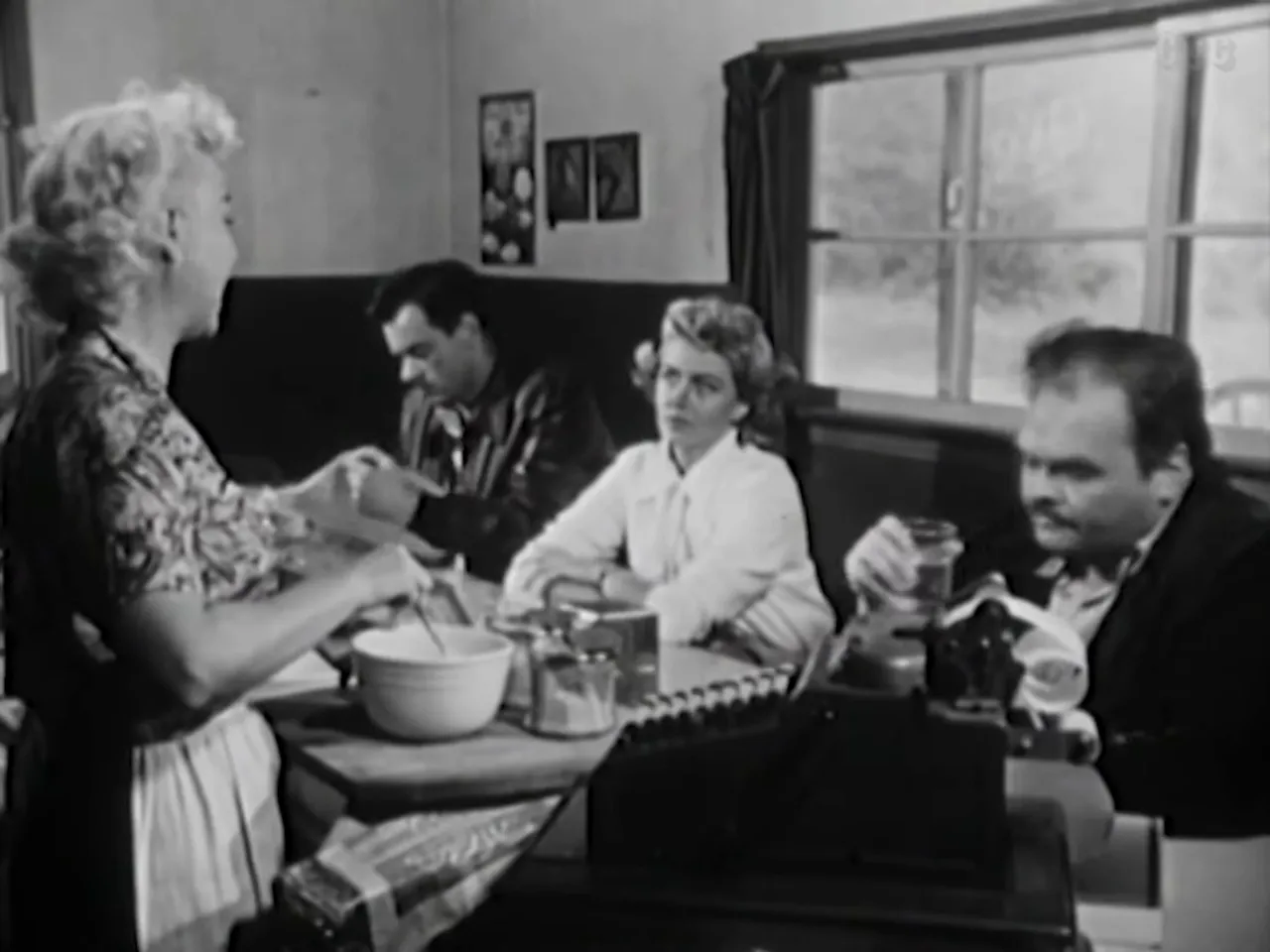
Production Background: Small Budget, Big Ambitions
The Fast and the Furious was produced by Roger Corman under his Palo Alto Productions banner. Wikipedia records that the film was shot in April 1954 on a tight schedule and budget — a 10-day shoot financed with funds Corman had acquired through prior work. John Ireland, who starred as the fugitive Frank Webster, only agreed to appear on screen if he could share directing responsibilities; the result was a co-directorial credit with Edward Sampson. Aware of the film’s economical construction, the viewer should regard every frame as the product of urgent, creative problem-solving.
Corman’s documentary-like approach to production — securing donated Jaguars from a local dealer, staging sequences at the Monterey racetrack, and shooting exteriors in Malibu and Point Dume — allowed a small team to achieve an impression of scope. The racing footage, central to the film’s visual identity, was real enough to claim audience attention; as Variety later observed, “High-priced sportscar bombs furnish most of the action,” and the footage, while repetitious to some viewers, is undeniably the film’s engine.
But the production choices also dovetail with noir’s resourcefulness. Film noir movies historically made striking use of economical filmmaking techniques — chiaroscuro lighting, tight interiors, and urban grit — to suggest a larger world. Corman’s film deploys its limited resources to similar effect, albeit on sunlit highways instead of rain-slick alleys. The result is an idiosyncratic noir: one driven by pistons and an undercurrent of moral fog.
Plot Overview: Fugitive, Kidnap, Race
At its core, The Fast and the Furious tells a simple, propulsive story. Frank Webster, a truck driver charged with murder, escapes from jail and heads for the Mexican border. After leaving a scene that suggests violence — and certainly provokes public outrage broadcast on radio bulletins — Frank encounters Connie Adair, a “lady racer” who owns and drives a Jaguar sports car. A confrontation escalates into abduction; Connie becomes Frank’s reluctant companion as he attempts to flee the law. Their relationship smolders between violence and attraction: she tries to escape several times; he treats her roughly, sometimes cruelly. This complicated intimacy evolves into mutual affection, complicating the binary between criminal and victim.
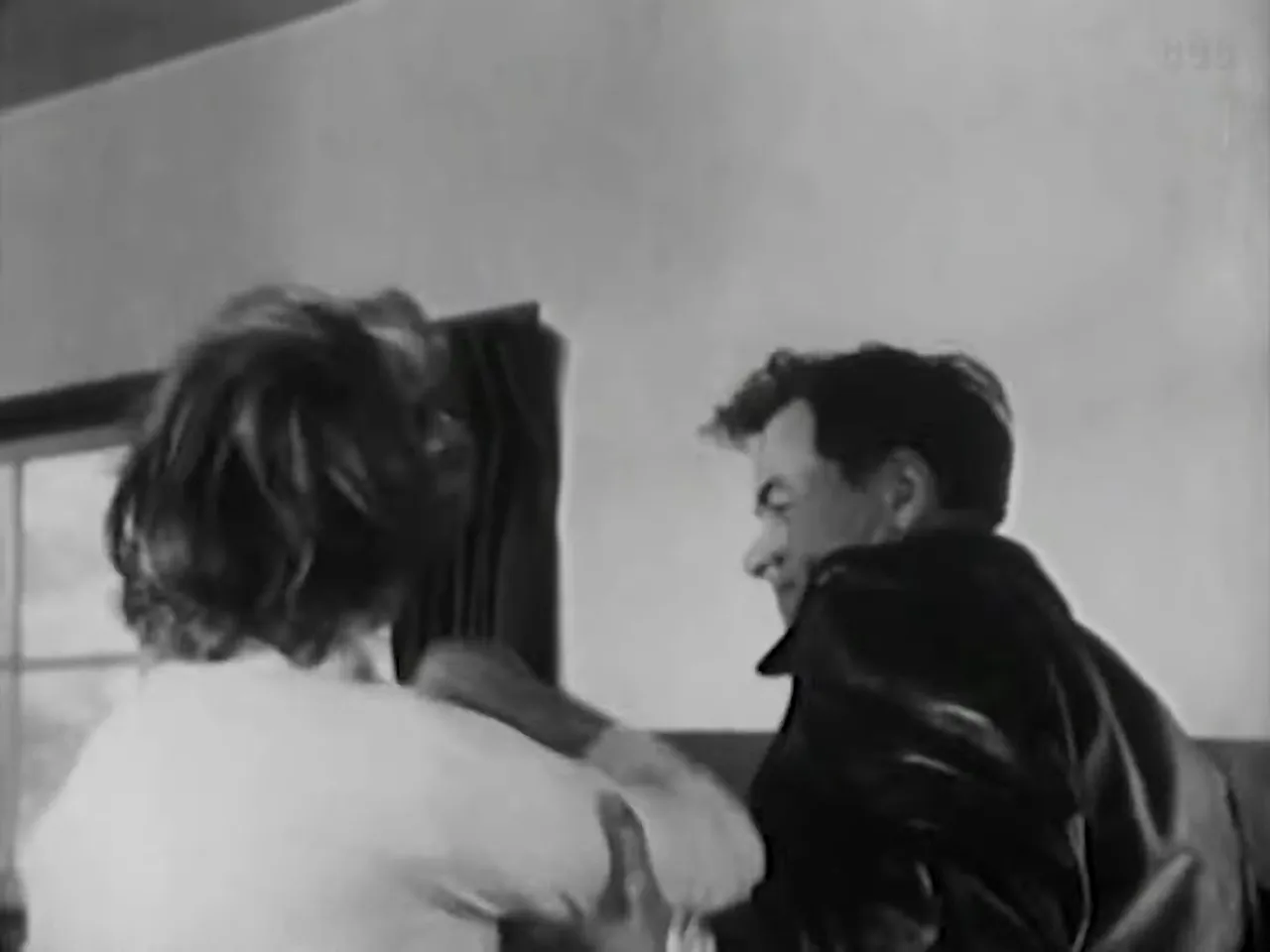
The film’s central set pieces are afforded by the racing world. Frank enters a cross-border sports car race under a false name, intending to use the event to slip into Mexico. The race sequences serve a dual purpose: they provide kinetic thrills and act as a narrative mechanism for tension and revelation. Faber, one of Connie’s friends, is suspicious of Frank and remains a persistent threat to his anonymity.
The climax unspools with melodramatic efficiency. Connie, forcibly locked in a shed to prevent her from turning Frank in, starts a fire that brings her friends to her rescue. She reports Frank to the police; a roadblock at the border results in a crash for Faber, who goes off the road and accidentally collides with a tree. Frank stops to rescue Faber, and Connie catches up to them in a car borrowed from a friend. In an ending more moral than filmically neat, Frank agrees to turn himself in and face trial — a penitential closure that reframes the fugitive’s rebellion as a potential claim to justice.
Characters: Frank Webster and Connie Adair
Frank Webster — The Fugitive as Tragic Antihero
John Ireland’s Frank Webster is a classic noir figure: wounded, defensive, convinced that the system cannot deliver him justice. The film’s backstory, derived from a road feud with a trucking rival, is crucial. After returning from the Army, Frank built his life around his truck and independence; when corporate and criminal pressures threatened that independence, a violent confrontation resulted in a man’s death and Frank’s incarceration. Ireland’s Webb (Webster) is a man primed for a tragic misreading: he believes he must escape both the law and the extralegal vengeance of rival truckers.
“All I was trying to do was keep from getting killed.”
This line from the transcript captures a central moral claim. It is the kind of rationalization noir protagonists give: self-defense turned into self-preservation turned into flight. The film’s decision to open with a fugitive on the run and sustain the viewer’s sympathy despite violent acts situates Frank within noir’s register of morally compromised heroes — men trapped by choices, history, and a social order that is, in their view, hostile and corrupt.
Connie Adair — The Lady Racer as Ambiguous Figure
Dorothy Malone’s Connie Adair is an unusual presence in mid-1950s cinema. She is introduced not as a traditional femme fatale but as a competent, speed-loving woman: a “lady racer” who navigates both social spaces and high-performance vehicles with confidence. Her agency complicates usual noir gender roles. Connie resists being merely a plot device; her attempts to escape Frank’s coercion and her later involvement in the race dynamics show a character who is not simply passive. Romantic tension between Connie and Frank develops out of violent circumstances — another noir trope — but Connie retains a moral clarity that forces Frank into a reckoning.
Connie’s line, “I love you,” toward the film’s emotional heart is significant. It shows that noir’s habitual cynicism about love is not monolithic; this film stages a more ambiguous tenderness that is earned through violence, rescue, and moral choice. She is a catalyst for Frank’s surrender — the personal appeal that redirects the fugitive toward the possibility of legal redress.
Themes and Tone: Crime, Escape, and Moral Ambiguity
If noir traditionally centers the urban underclass, The Fast and the Furious relocates noir’s moral darkness to the open road. Thematically, the film deals with:
- Miscarriage of justice: Frank’s claim of innocence and his belief that the law will not protect him is a key motor of the plot.
- Vigilantism and public resentment: Truckers and citizens alike are quick to judge, eager to brand and to punish — a collective temperament that accelerates Frank’s paranoia.
- Romance born of coercion: The complicated bond between captor and captive replicates noir’s frequent fascination with love as both refuge and trap.
- Redemption through self-surrender: The ending’s moral choice — Frank turns himself in — aligns with noir’s recurring negotiations between fatalism and the notion that responsibility may remain a viable course.
These themes are expressed in a terse, often clipped rhythm. Dialogue bristles with toughness and cynicism. Public radio bulletins punctuate the narrative, much like an omnipresent law in the sky, and the film uses roadside spaces — diners, gas stations, and the race park — as liminal zones where the protagonist’s identity is constantly under threat. The film’s tonal oscillation between adrenaline and dread is precisely what allows it to be read as a film noir movie, even as it indulges in the bright spectacle of car races.
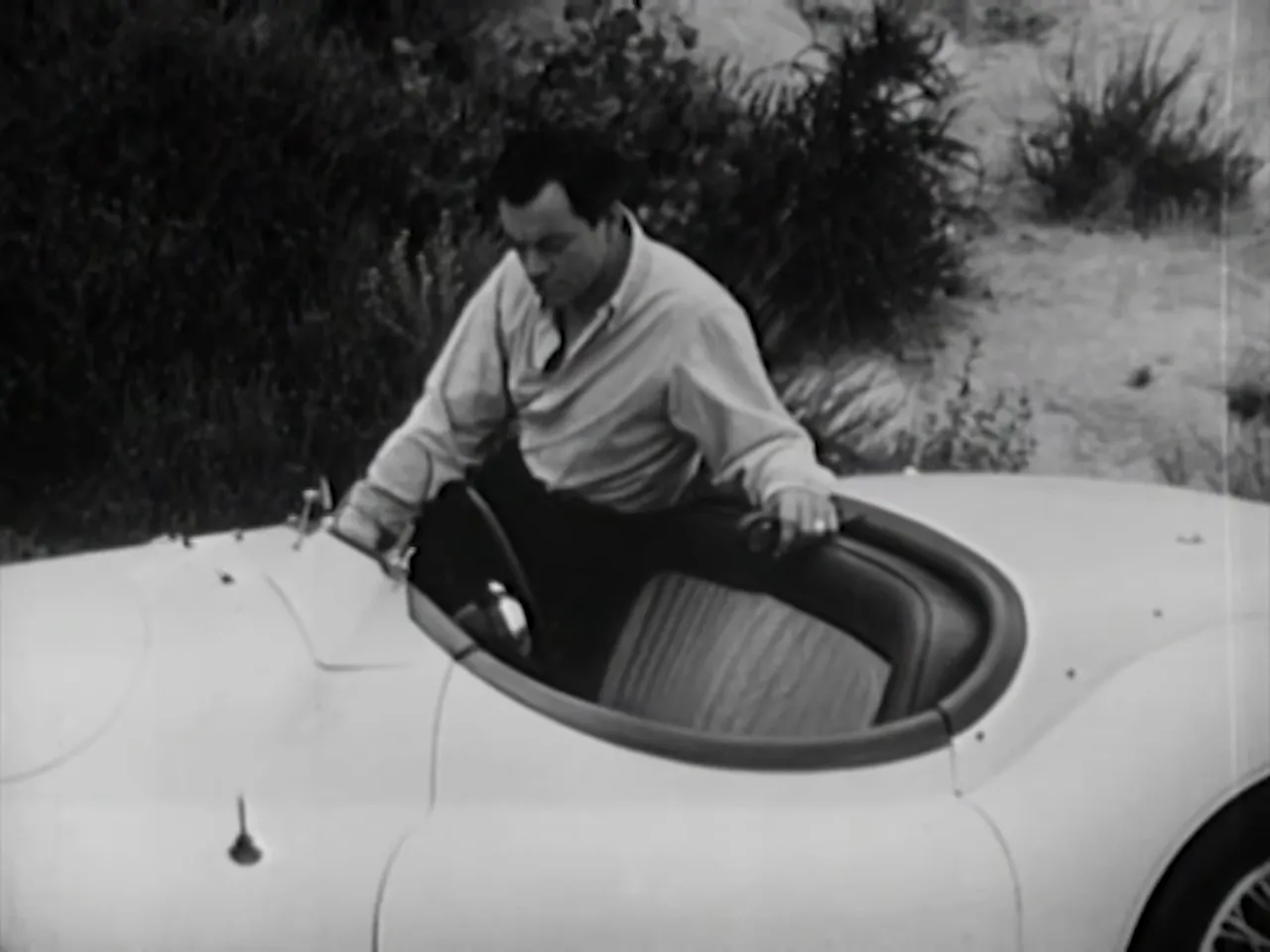
Visual Language: Racing Footage and Low-Budget Ingenuity
On a purely visual level, The Fast and the Furious relies on racing sequences to create cinematic excitement. The footage of Jaguars and other sports cars roaring around tracks and threading mountain turns gives the film kinetic energy and spectacle. Corman’s production shrewdly capitalized on donated cars and location access to Monterey and Malibu, and these exteriors provide the film’s most memorable images.
Yet every high-velocity frame is counterbalanced by more modest interiors: the diner's cramped booth, the gas station’s fluorescent glare, the shed where Connie is imprisoned. These tight spaces are noir-ready environments; enclosed, claustrophobic, and full of whispered accusations. The contrast between open-road freedom and trapped interiors amplifies the film’s central tension. Even the race park, ostensibly a place of freedom and sport, becomes a cage — a site where identity must be verified, numbers are assigned, and the police presence turns a festival into a manhunt.
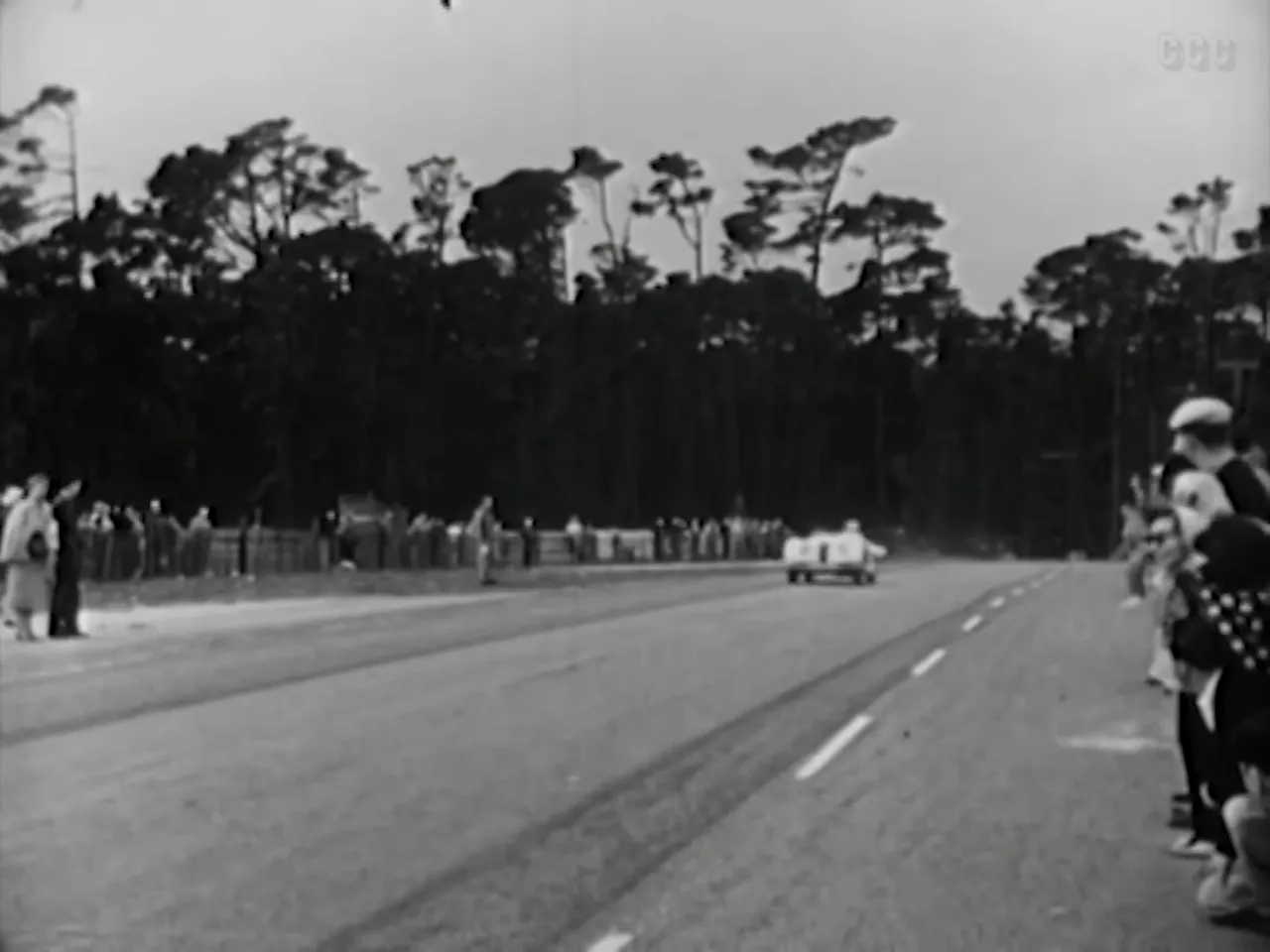
Lighting in the film is more pragmatic than artistically flamboyant, which is consistent with its budget. Nevertheless, the cinematography often leans toward the noir aesthetic: harsh sunlight can act like a substitute for chiaroscuro, creating deep shadows where the protagonist’s motives become uncertain. Night sequences, particularly the late-hour rush toward the border and the quietly staged hideaway scenes, employ darkness to conceal and reveal simultaneously — a classic noir move.
Sound, Dialogue, and Radio Bulletins as Narrative Devices
Sound design in The Fast and the Furious is straightforward but functional. Radio bulletins serve as an omniscient chorus announcing Frank’s fugitive status, propelling the plot and adding a civic dimension to the chase. Those bulletins — crisp, clipped, and public — repeatedly remind the audience of the law’s presence. They transform otherwise private acts into civic spectacles, aligning public attention with the forces of authority. As one line in the transcript insists: “Police have broadcast a description of Frank Webster still reported at large.” That broadcast is the narrative drumbeat to which the film marches.
Intertitles and accents of radio news also allow the film to compress time and widen its world without expensive set pieces. Where budgetary constraints might have demanded exposition-heavy scenes, the film instead leverages the radio to supply necessary information. Likewise, sharp repartee in roadside conversations — “They put a guy in jail and he pops the taxpayers' money” — functions as social commentary, revealing the public’s appetite for punishment and spectacle.
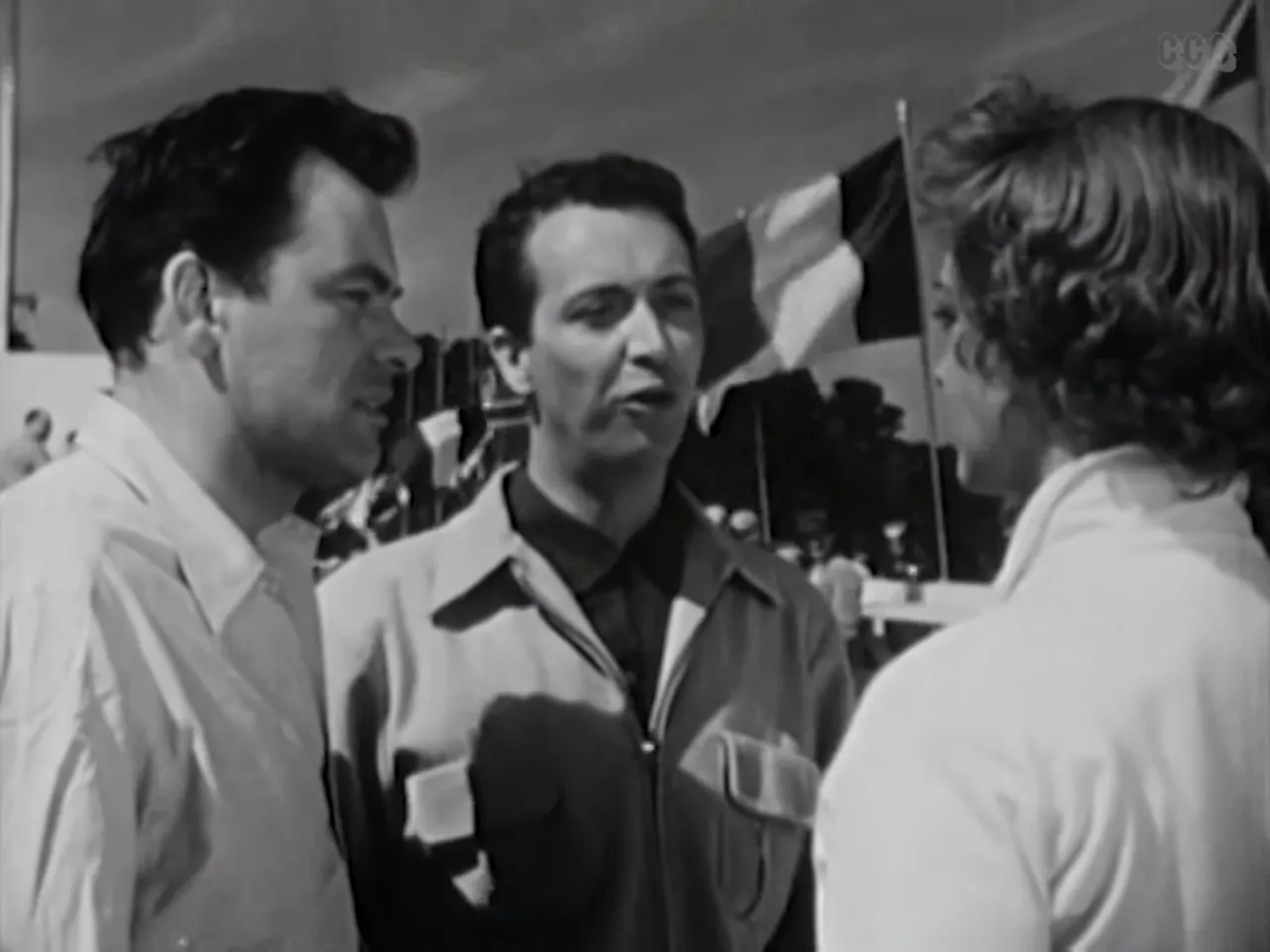
Performance: Ireland, Malone, and Supporting Players
John Ireland’s performance as Frank Webster is the film's moral anchor. He brings a rough-edged, world-weary texture to the role — precisely the kind of presence that makes the viewer wonder whether the man is more victim than villain. Dorothy Malone’s Connie is a spirited counterweight: spirited, practical, and emotionally complex. The chemistry between the two oscillates from rough antagonism to reluctant concern; this emotional ambiguity is the beat that keeps the film interesting.
Supporting players — such as Iris Adrian’s Wilma Belding and Bruce Carlisle’s Faber — populate the world with recognizable types: the zealous citizen, the suspicious friend, the boisterous announcer. Each performs a function common to noir: they reflect the protagonist’s moral landscape and often push the narrative toward confrontation. A notable performance detail is how ordinary townspeople — truckers, café waitresses, race officials — quickly morph into instruments of accusation. That social readiness to condemn is a moral leitmotif in many noir narratives.
Reception: Contemporary and Later
Contemporary critical reception was mixed. Variety regarded the film’s racing footage as a primary attraction while noting its repetitiveness: “Racing footage is interesting but becomes repetitious and helps to string out the running time to an unnecessary 73 minutes.” Leonard Maltin later dismissed the film’s romantic interludes and “cops-on-the-chase sequences” as uninspired. Such criticisms are fair: the film occasionally sacrifices character development for movement and spectacle.
Box office performance shows an instructive story. The film was popular enough to establish Roger Corman’s reputation and to secure him a three-picture deal. Yet its distribution through the newly formed American Releasing Corporation proved problematic; as a lower-billed feature, it often played on the bottom of double bills and thus earned fixed fees instead of a share of receipts. Despite this, Corman managed to repay his investors, and the film’s modest success helped launch ARC — later American International Pictures — into the business of packaged double features.
Legacy: The Title's Life and Cultural Afterlives
One of the film’s most remarkable legacies is purely titular. Decades later, the name The Fast and the Furious was licensed for Universal Pictures' 2001 blockbuster franchise. Producer Neal H. Moritz — and, in some accounts, his father, a former AIP executive — recognized the evocative energy in Corman’s title and secured rights to reuse it. The later franchise, of course, transformed the brand into a global, effects-driven action series. Yet this earlier film’s title demonstrates the cultural persistence of certain themes: speed, danger, and the romance of outlaw life. Even when the title was repurposed for modern spectacle, the original's small-scale noir sensibility left a residual cultural trace.
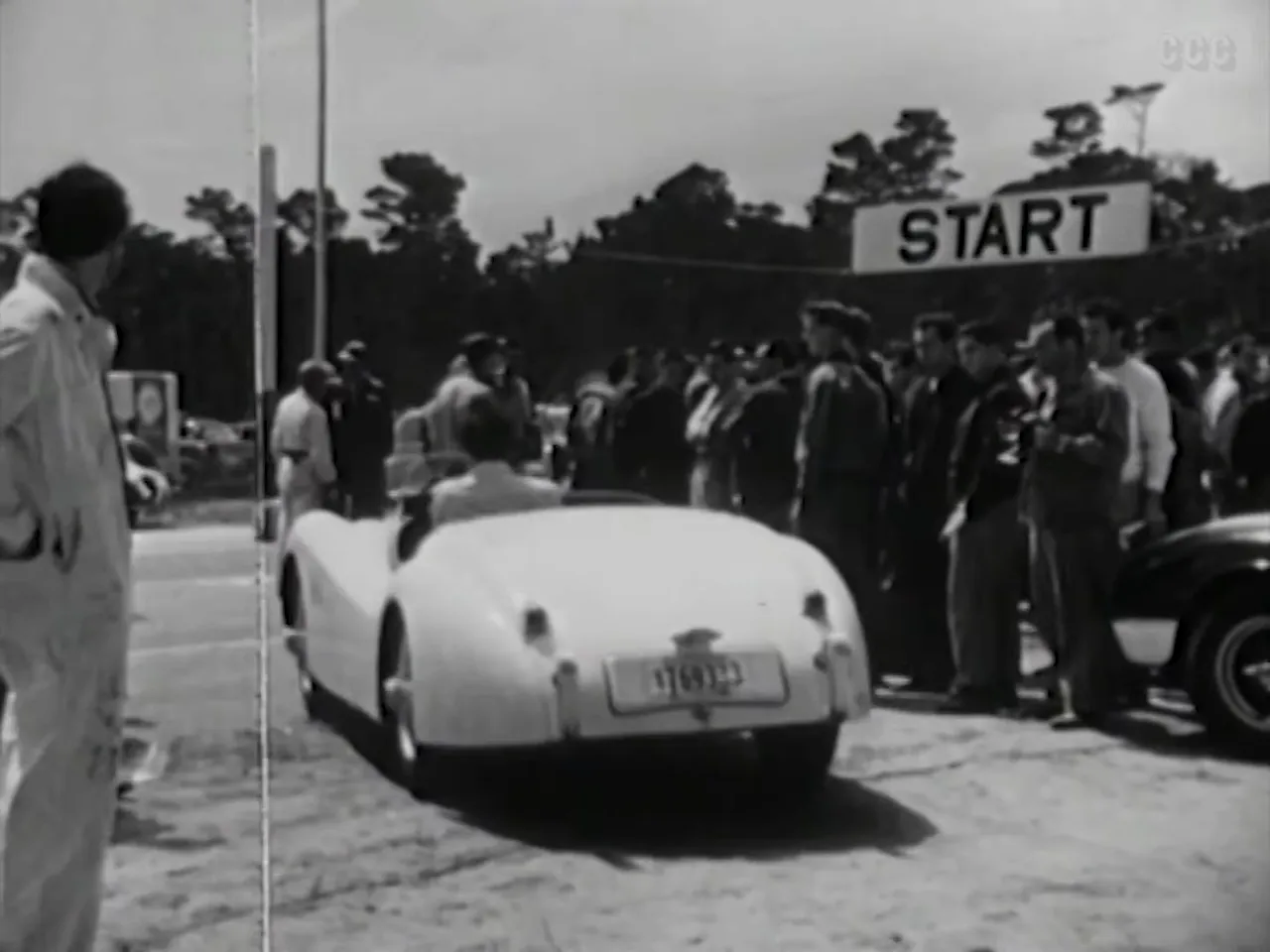
Close Read: Key Scenes and Their Noir Values
The Diner Confrontation
The film’s opening diner sequence is a microcosm of its thematic tensions. The conversation is banter at first — talk of pineapple juice, racing, and trucker gossip — but it soon slides into accusation. The diner functions as a social barometer; the characters’ casual cruelty and readiness to judge Frank prefigure the public’s hostile response later in the film. The mix of convivial small talk and latent violence is classic noir: everyday speech masking potential menace.
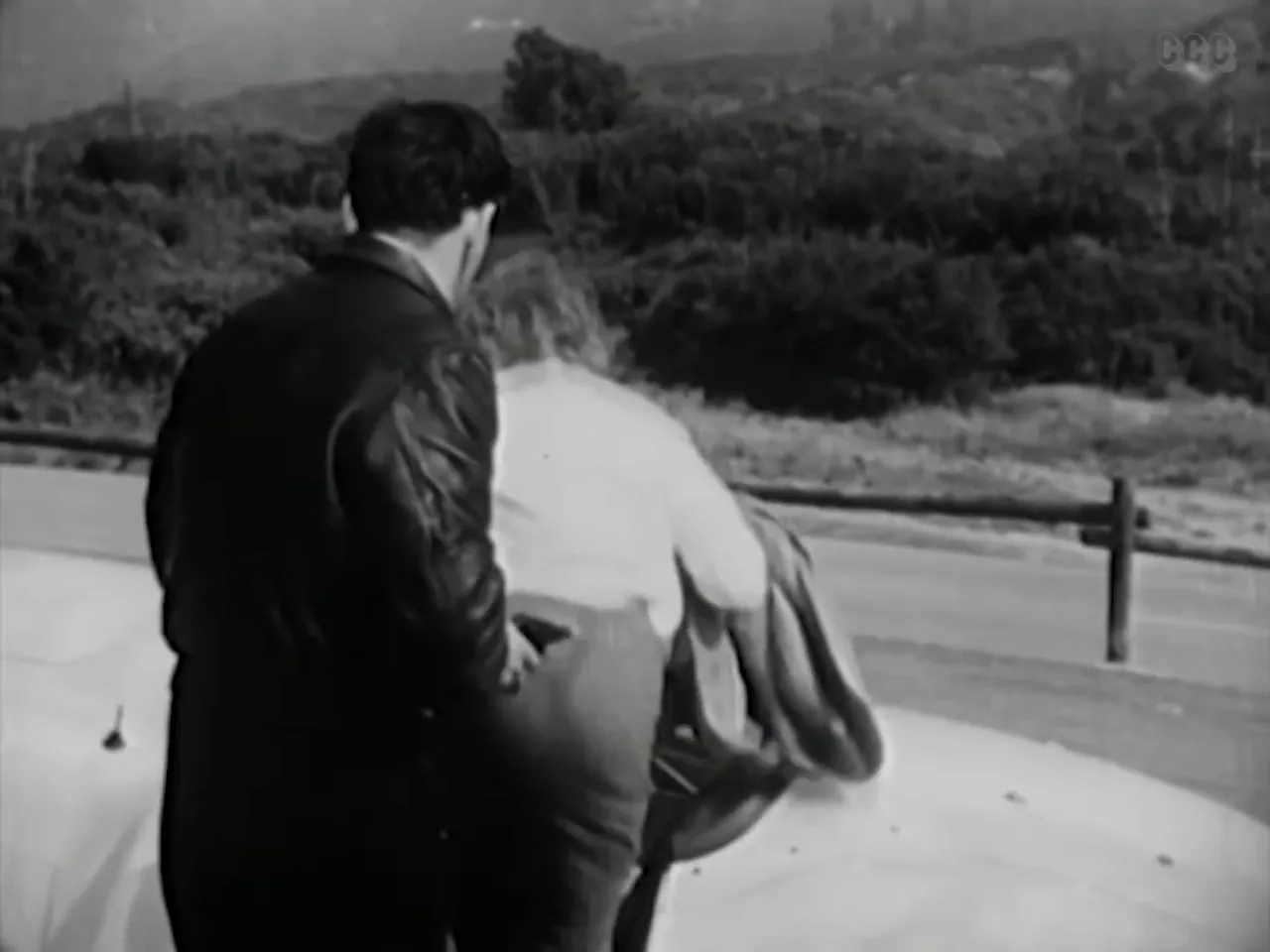
Kidnapping and Complicity
The abduction of Connie is brutal and uncertain, a scene that forces the audience to constantly renegotiate sympathy. In noir, abduction often catalyzes moral damage; here, Connie’s capture leads not to passive victimhood but to resistance. She attempts escape repeatedly, which, in turn, humanizes Frank by exposing his fear and insecurity. The dynamic evolves from coercion to a begrudging affection — an arc that, although melodramatic, engages with noir’s preoccupations about power and desire.
Race as Escape and Trap
The race sequences are beautifully paradoxical: they promise escape and yet become the very mechanism of entrapment. Frank enters the International under a false name, hoping to vanish into the border-crossing melee. Instead, the event exposes him to a different kind of public: officials, announcers, fellow racers, and the camera-like scrutiny of checkpoints. The race park is a microcosm of society — all the more threatening because the threat is framed as sport. This inversion is quintessential noir: the public spectacle reveals private guilt, and the illusion of freedom collapses into surveillance and capture.
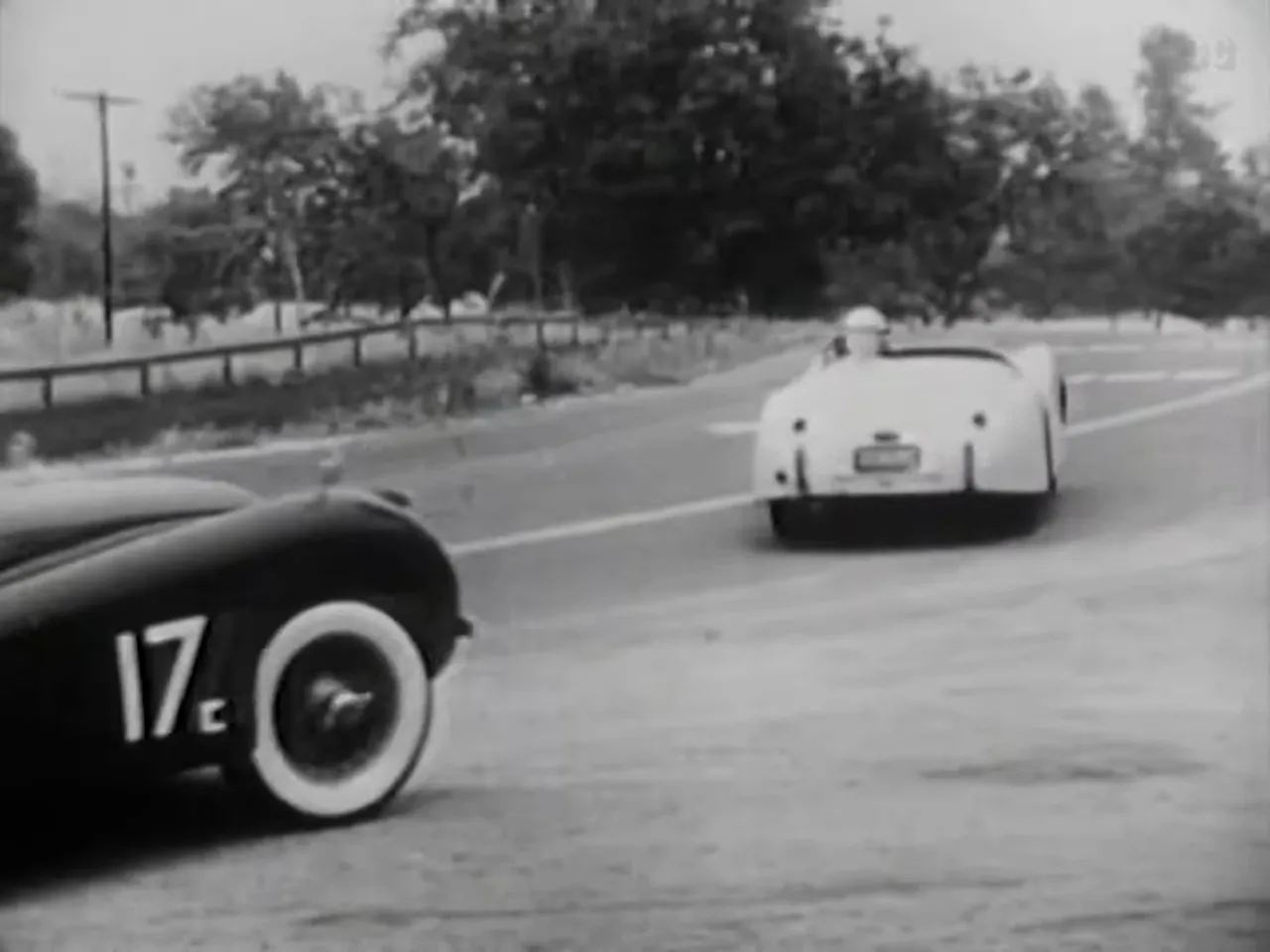
The Shed Fire and Moral Reckoning
When Connie sets the shed on fire to attract rescue, she performs an act of agency that unravels the fugitive’s plan. This moment is symbolic: darkness is lit, secrets are exposed, and the moral balance shifts. Frank’s ultimate decision to stop, help the injured Faber, and then agree to surrender is not a tidy absolution. It is, however, a recognition that the social order — flawed and unjust though it may be — is the place where claims to innocence can be tested. The notion that the law, imperfect as it is, offers the only viable path to vindication is a profoundly noir paradox; the outlaw must face the very structure that he despises to gain his rightful day in court.
Why The Fast and the Furious Qualifies as a Film Noir Movie
To call The Fast and the Furious a film noir movie is to expand the term’s spatial and thematic boundaries. Traditional noir thrives in chiaroscuro, back alleys, and monologues; Corman’s film relocates those concerns to highways and racetracks. But the essential noir ingredients are present:
- Complex moral ambiguity: Frank is neither wholly villain nor unblemished hero.
- Social cynicism: Townspeople, truckers, and officials display an appetite for condemnation.
- Fatalistic momentum: Frank’s escape is propelled by a sense that the system will not protect him, leading to a tragic spiral.
- Sexual danger and ambivalence: Romance arises through coercion and mutual dependence.
- Visual contrasts: Open roads and cramped interiors create a sense of exposure and entrapment simultaneously.
Put differently, the film translates noir’s moral darkness into a milieu of motion and machine. Where a typical film noir might stage a confrontation in a rain-soaked alley, The Fast and the Furious stages it on a sun-washed desert road. The aesthetic shift does not erase noir’s ethical core; it simply demonstrates the genre’s adaptability.
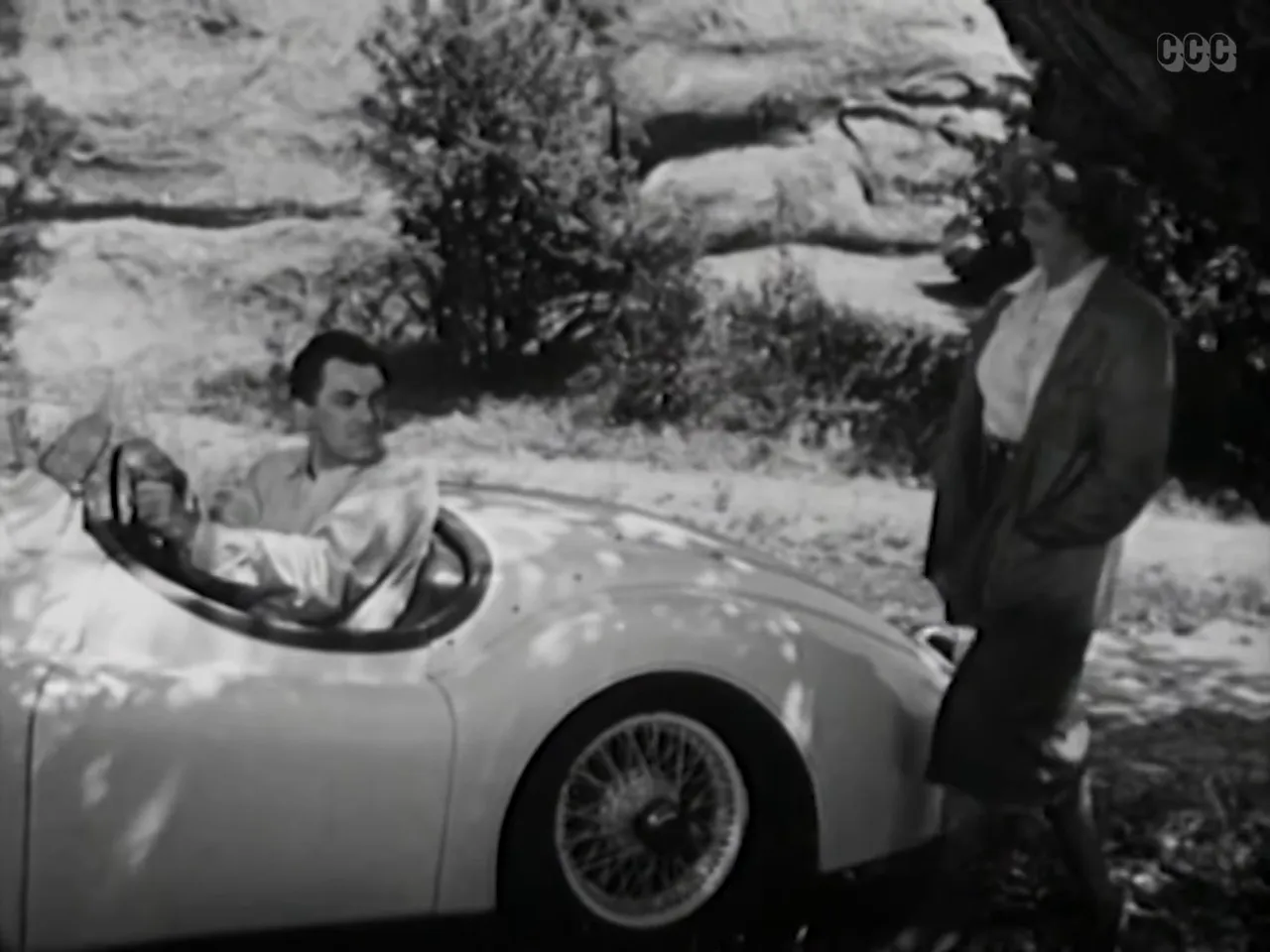
Critical Assessment: Strengths and Weaknesses
The Fast and the Furious succeeds on several counts. First, it offers an effective fusion of genre elements: racing spectacle and noir atmosphere. The film’s pacing is brisk, and the production’s resourcefulness yields memorable sequences despite budgetary limits. John Ireland’s rough-hewn charisma anchors the piece, while Dorothy Malone gives Connie an assertive presence that complicates simple victim narratives.
However, the film is not without flaws. Critics have rightly pointed out the repetitiveness of race footage and the occasionally unsubtle romance. Some scenes function as plot mechanics rather than character development. The film’s relatively short running time, coupled with its brisk production, sometimes results in compressions that leave secondary characters thinly rendered. Still, these shortcomings are intrinsic to low-budget filmmaking of the period and do not negate the film’s overall achievement.
Contextual Significance in Corman’s Career and American Independent Cinema
The Fast and the Furious was pivotal for Roger Corman’s emerging role in independent filmmaking. Wikipedia’s record of the film’s distribution via ARC — which later became American International Pictures — demonstrates how such low-budget features could catalyze a business model of rapid production and distribution. Corman’s savvy deal-making, in which he traded film rights for immediate advances, allowed him to repay investors and produce subsequent titles. This industrious pragmatism would define Corman’s career and, by extension, a certain strain of American independent cinema that prized speed, economy, and market awareness.
Moreover, the film’s willingness to graft noir sensibilities onto other genres — here, the sports car melodrama — reveals a flexibility in early indie filmmaking. It shows how genre boundaries could be porous, allowing filmmakers to mix moods, motifs, and markets in order to find audience traction.
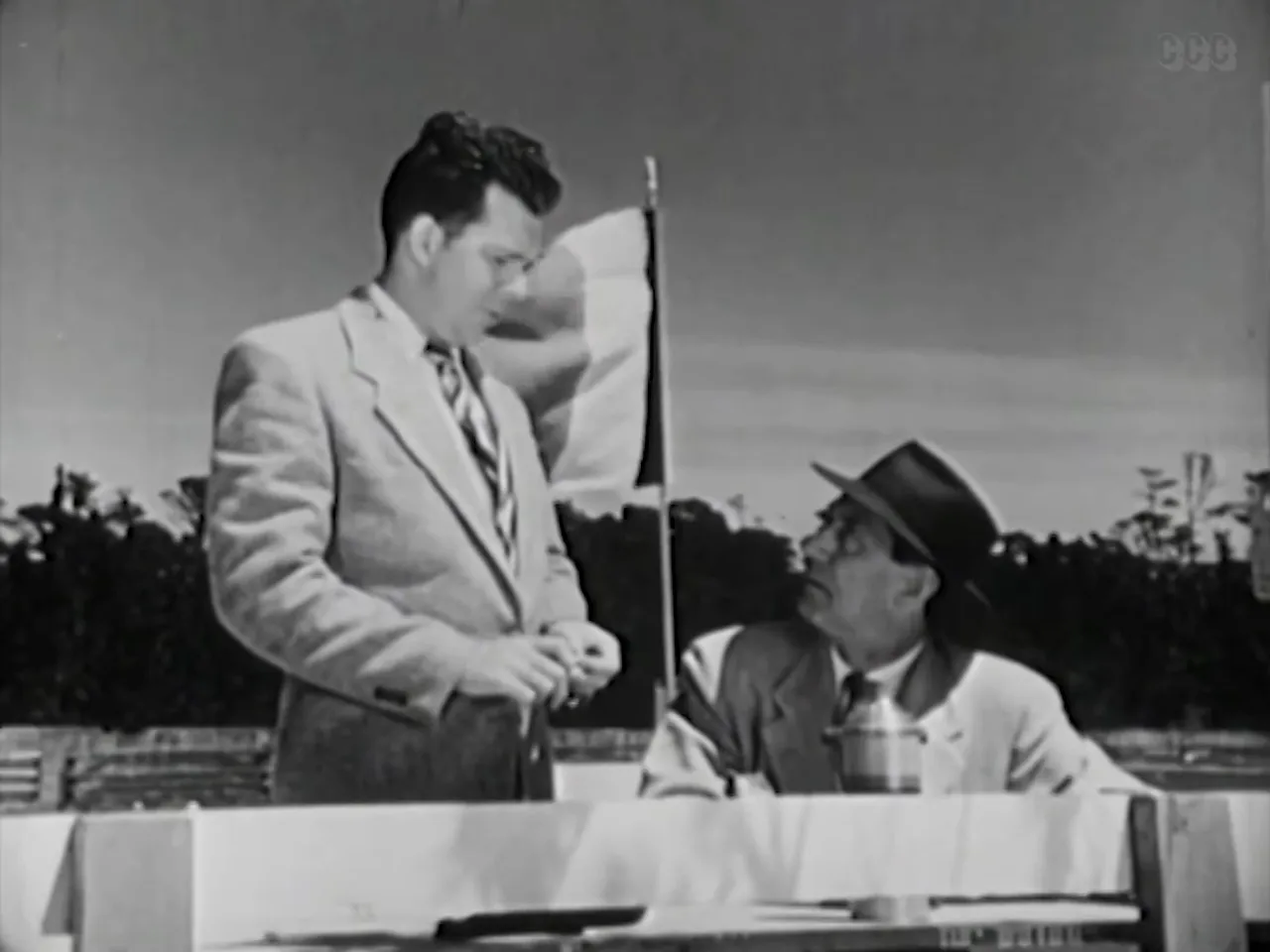
Conclusion: Reclaiming a Lesser-Known Classic as a Film Noir Movie
The Fast and the Furious deserves reconsideration not merely as an artifact of low-budget 1950s cinema but as an imaginative translation of film noir motifs into a world of speed and public spectacle. It may lack the stylistic polish of high-budget noirs, yet it offers the genre’s essential moral quandaries: the contested nature of truth, the precariousness of liberty, and the ways private guilt becomes public drama. As a film noir movie, it stands as a hybrid — an example of noir’s thematic elasticity and Corman’s early capacity to make durable entertainment out of limited means.
For the classic cinema enthusiast and the student of genre alike, The Fast and the Furious is a film that rewards revisitation. It is a study in how speed can be both liberation and entrapment, how public perception can crush an individual’s claim to justice, and how love — fragile and compromised — can nonetheless lead to an ethical choice: to face judgment rather than to flee forever.
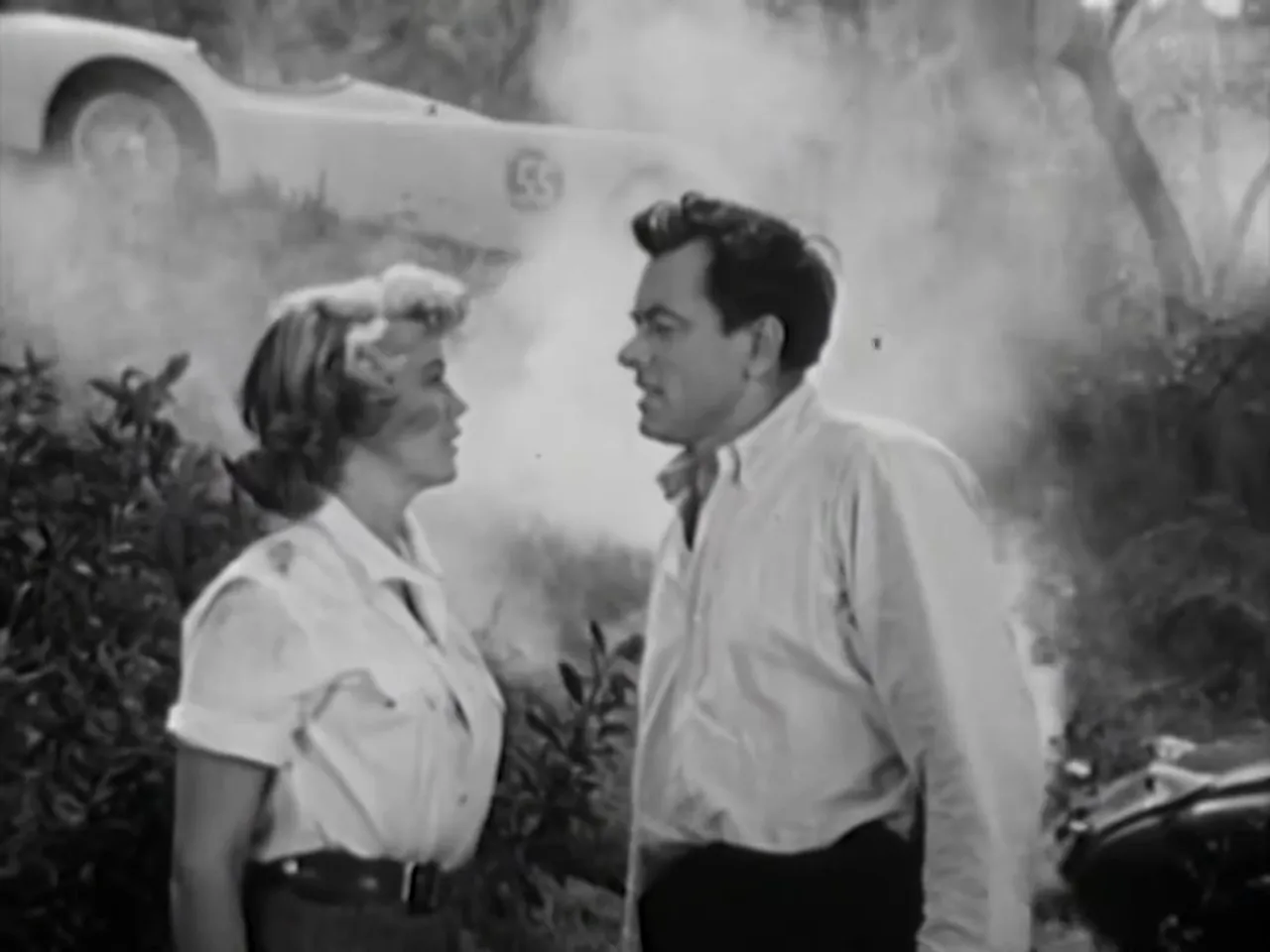
Suggested Viewing Notes for the Classic Film Fan
- Watch the opening diner scenes to catch the film’s tonal establishment: banter quickly morphs into suspicion and threat.
- Pay attention to radio bulletins — they function as an omniscient chorus shaping public reaction.
- Note how racing sequences alternate with small-scale interior scenes; this juxtaposition is the film’s tonal engine.
- Observe Connie’s evolution from captive to moral interlocutor — her presence reframes the fugitive’s choices.
- Consider the ending in the context of noir redemption: Frank’s surrender is ambiguous, not an exoneration; it offers an ethical reckoning rather than a tidy closure.
Further Reading and Context
For readers interested in the film’s production context and legacy, Roger Corman’s early producing strategies, the formation of American Releasing Corporation, and the film’s later influence on popular culture (notably the reuse of its title by a 21st-century action franchise) are valuable avenues of exploration. The Fast and the Furious demonstrates how independent filmmakers in the 1950s could craft compelling stories with minimal resources, and how such films contributed to the evolution of genre cinema in America.
Above all, reconsidering The Fast and the Furious as a film noir movie invites a richer appreciation of how noir’s moral and aesthetic concerns migrate across spaces: from rain-soaked streets to sunlit dunes, from smoky bars to racetrack lanes. The result is a film that, despite its limitations, continues to resonate as an artifact of moral drama in motion.
